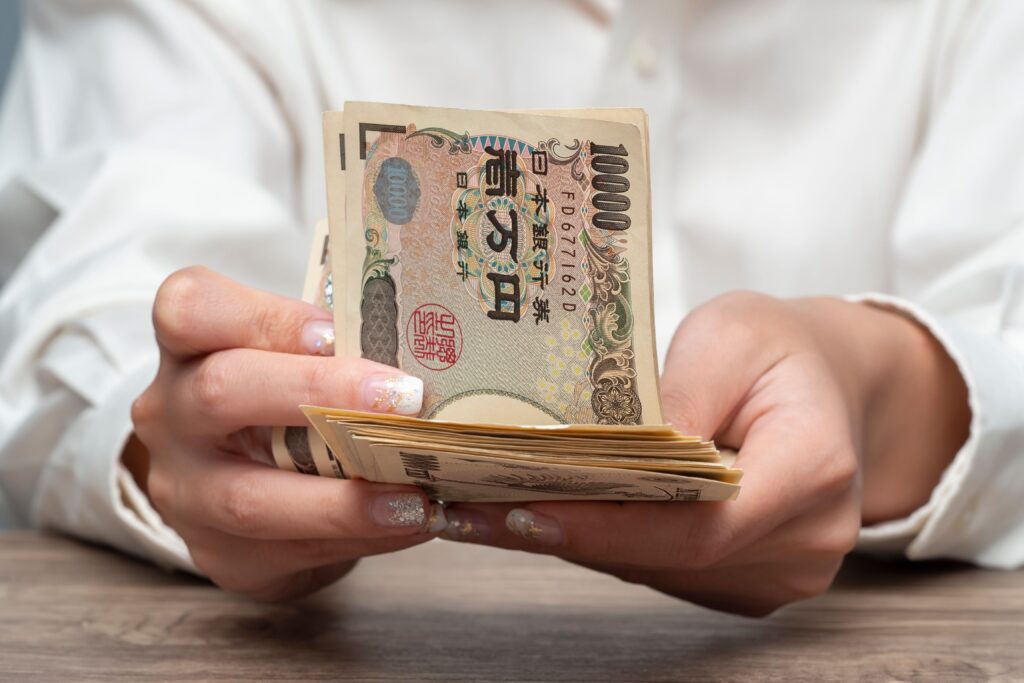Opening a Bank Account in Japan as a Foreigner: What You Need to Know
Opening a bank account in Japan as a foreigner can feel like stepping into a maze with no clear exit. Japan’s financial system is robust—part of a $5 trillion economy—and it’s a critical piece of doing business here. But for those of us coming from outside, it’s not as simple as walking into a branch with a smile and a passport. I’ve talked to people who’ve wrestled with this, and I’ve faced it myself. The rules, the paperwork, the unspoken expectations—it’s a lot to unpack. Still, it’s a hurdle you can clear with the right know-how.
For foreign entrepreneurs Japan, a bank account in Japan isn’t just a convenience—it’s a necessity. Whether you’re launching an e-commerce store, a tech startup, or something niche, you need a local account to pay suppliers, receive funds, and manage operations. The process can be intimidating, but it’s not impossible. This guide is here to walk you through it all—why it matters, what you’ll face, and how to get it done, step by step. Along the way, I’ll point to tools like Japan Flex’s services—virtual offices, inkans, and more—that can make it smoother. Let’s dive into what you need to know.

Why a Bank Account in Japan Matters
A bank account in Japan is your lifeline to the market. Japan’s economy runs on yen, and cash is still king—over 60% of transactions are cash-based, even in 2025. For businesses, a local account ties you into this system. It’s how you pay employees, settle with suppliers, and handle taxes. Without one, you’re stuck using costly international transfers or third-party services like PayPal, which don’t always cut it for Japanese partners.
I’ve seen this firsthand. A friend tried running her online shop from abroad, relying on a U.S. account. Suppliers balked—some refused to deal with foreign banks, citing delays and fees. She lost weeks and credibility before caving and opening a Japan bank account. It’s not just logistics; it’s trust. Japanese businesses and customers prefer local ties—it signals you’re serious about Japan market entry.

The Challenges Foreigners Face
Opening a bank account in Japan isn’t a walk in the park for foreigners. The banking system’s built for residents, and foreigners—especially non-residents—hit roadblocks. First, there’s residency. Most banks want a Japanese address and a residence card (zairyu card), tied to a visa like the Business Manager or Work visa. No residency? Options shrink fast.
Language is another hurdle. Forms, conversations, even websites—mostly Japanese. English support exists, but it’s spotty outside big cities. I’ve heard of people spending hours in a branch, only to leave with nothing because the clerk couldn’t explain the rules. Then there’s the inkan—Japan’s seal system replaces signatures, and banks insist on it. No inkan, no account.
Bureaucracy adds layers. Banks demand proof of your business—registration docs, a local address, sometimes a business plan. Some even ask for a Japanese guarantor, though that’s rarer now. A colleague of mine got turned away three times—missing papers, wrong inkan, no translator. It’s not personal; it’s just how Japan rolls.
Types of Bank Accounts in Japan
Before diving in, know your options:
- Ordinary Savings Account (Futsu Yokins): Basic, flexible—good for daily ops. Most foreigners start here.
- Business Account (Toza Yokins): For companies, with features like payroll or bulk payments. Essential for scaling.
- Foreign Currency Account: Rare, but some banks (e.g., SMBC) offer USD or EUR accounts. Useful for imports, less for local use.
For startups, a savings account often suffices initially—about ¥1,000 ($6.50 USD) to open. Business accounts might need ¥10,000-¥50,000 ($65-$330 USD) and more docs. Pick based on your needs, but expect banks to nudge you toward business accounts once you’re registered.

Requirements to Open a Bank Account in Japan
Here’s what you’ll typically need:
- Passport: Your ID baseline—bring it everywhere.
- Residence Card: Proves your visa status; 6+ months validity is ideal.
- Japanese Address: Banks verify this—Japan Flex’s virtual office Japan provides one affordably.
- Inkan: Custom seal, not a signature. Japan Flex sells these, tailored for foreigners.
- Company Registration Docs: Certificate of incorporation, if you’re a business. Japan Flex’s registration assistance helps here.
- Phone Number: Local number—Japan Flex’s WiFi/SIM cards can cover short-term needs.
- Proof of Income/Activity: Bank statements or a business plan, showing you’re legit.
Non-residents? Tougher—some banks flat-out say no. Digital banks like Wise or prepaid cards might bridge the gap, but they’re not full accounts.
Step-by-Step Process
Here’s how it goes, based on real experiences:
- Choose a Bank:
- Megabanks: Mitsubishi UFJ, SMBC, Mizuho—big, but strict. SMBC has English branches in Tokyo.
- Regional Banks: Shinsei, Resona—friendlier to foreigners, some English support.
- Digital Options: Rakuten Bank, Japan Post Bank—online-friendly, less paperwork. I went with Shinsei—smaller, less rigid.
- Gather Docs: Passport, residence card, Japan Flex virtual office address proof, inkan. Bring extras—banks love paper.
- Visit the Branch: Online’s rare—most require in-person. Book an appointment if possible. I showed up early; staff appreciated it.
- Fill Forms: Japanese, usually. Bring a translator (¥5,000/hour, $33 USD) or use Google Translate’s camera—imperfect but workable.
- Interview: They’ll ask why you need the account. “Business operations” is solid—keep it simple. My first try flopped; I over-explained.
- Wait: Approval takes 1-2 weeks. Cards and checkbooks follow. Shinsei mailed mine in 10 days.
- Activate: Deposit cash—¥1,000 minimum—and you’re live.
Tips to Make It Easier
From trial and error, here’s what works:
- Go Prepared: Over-document—passport copies, business plans, even a letter explaining your intent. I got rejected once for missing a utility bill.
- Bring Help: A bilingual friend or pro translator turns chaos into clarity. JETRO offers free advisors too.
- Use Japan Flex: Their virtual office services give you an address; registration help preps your docs; inkans seal the deal.
- Start Digital: Rakuten Bank’s online process skips some hassles—still needs an address, though.
- Be Patient: Rejection happens—try another branch or bank. Persistence pays.
Common Pitfalls to Avoid
Foreigners trip up often. Watch these:
- No Address: Banks won’t budge—Japan Flex fixes this fast.
- Wrong Inkan: Generic stamps fail; get a custom one from Japan Flex.
- Language Gaps: No English? You’re stuck. Prep phrases—“kochira wa watashi no inkan desu” (this is my seal).
- Rushing: One visit rarely does it. I budgeted a month; it took three weeks.
Banks Friendly to Foreigners
Not all banks are equal:
- Shinsei Bank: English support, flexible—my pick.
- SMBC Prestige: Big, with bilingual branches in Tokyo/Osaka.
- Japan Post Bank: Simple, nationwide, some English forms.
- Rakuten Bank: Online, foreigner-friendly, but needs residency.
- MUFJ: Strict—tough without fluent Japanese or a guarantor.
Shinsei worked for me—less red tape, decent English. Test a few; experiences vary.
Alternatives If You’re Stuck
No luck? Options exist:
- Wise: Multi-currency account, yen-friendly, but not a full bank.
- Prepaid Cards: Suica or Pasmo—cash-based, limited use.
- Partner Accounts: A local friend’s account—risky, temporary fix.
These bridge gaps, but a bank account in Japan is the real goal for doing business in Japan.
How Japan Flex Helps
Opening a bank account in Japan ties into your broader startup journey, and Japan Flex smooths it out. Their virtual office gives you the address banks demand—prestigious, affordable, no lease hassles. Registration assistance preps your company docs, a must for business accounts. Inkans from them meet banking norms—custom-made, ready to go. Visiting Japan to open it in person? Their WiFi/SIM cards keep you online for appointments. It’s practical support for a complex step.
Real Stories of Success
People crack this daily. Sarah, a Brit, opened a Shinsei account for her e-commerce gig. She used Japan Flex’s virtual office for her address and inkan—approved in two weeks. John, a U.S. techie, hit snags with MUFJ but switched to Rakuten with Japan Flex’s help—live in a month. It’s not magic; it’s preparation.
Why It’s Worth It
A bank account in Japan unlocks Japan’s market—local payments, trust, growth. It’s a slog, but the payoff’s real. Japan’s pushing foreign entrepreneurs Japan—$10 billion in investment in 2024—and a bank account ties you in. It’s your anchor for affordable business Japan.
Your Next Move
Opening a bank account in Japan starts with prep:
- Pick a Bank: Shinsei or Rakuten for ease.
- Get Docs: Use Japan Flex’s virtual office and registration help.
- Grab an Inkan: Japan Flex has you covered.
- Visit or Apply: Bring help, be patient.
- Stay Connected: Their WiFi/SIM cards for trips.
I got mine after a few tries—it’s doable. Got questions? Share below—I’d love to hear. Ready to start? Check Japan Flex and get rolling. Japan’s waiting.

